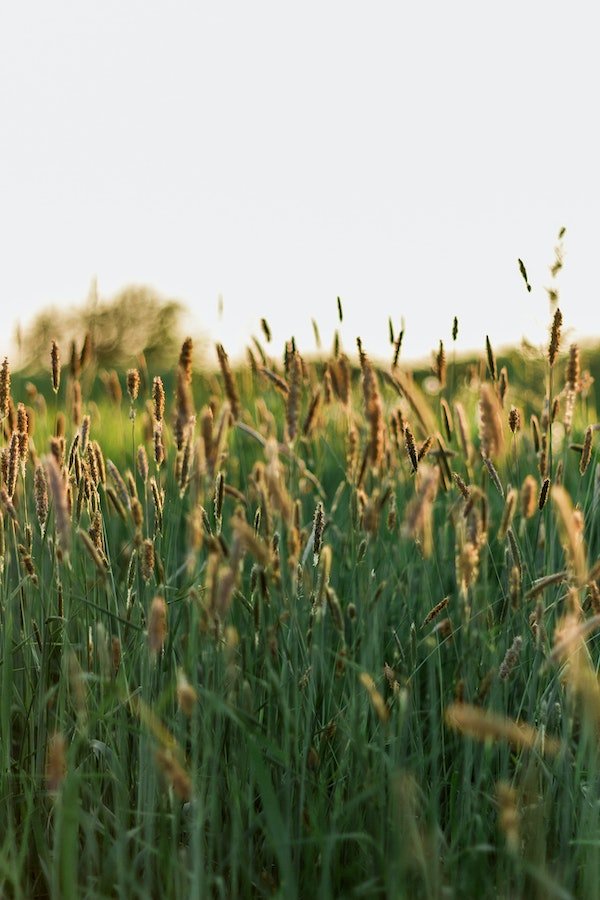
What Is Food Sovereignty?
Understanding The Difference:
Food Security & Food Sovereignty
Have you heard the term “food sovereignty?” The movement has gathered steam in recent years, with the term regularly popping up in publications like The Guardian, Forbes, and Business Insider.
While first coined by La Via Campesina, an “international peasants movement” representing small, rural farmers around the world, at the 1996 World Food Summit, we’re hearing about food sovereignty a lot more frequently—and for a good reason. It turns out that food sovereignty has a lot to do with the future of global food systems and whether or not those systems are healthy.
“The food sovereignty response is actually we have tons of food, it’s all being wasted.”
“When I’m talking about [food sovereignty], I say it’s local, democratic control of food systems,” said John Peck, executive director of Family Farm Defenders in Madison, Wisconsin. “That’s how I explain it to people.”
The current food systems claim that “if we knew how to grow food better or preserve it better with more sulfates, then we wouldn’t have a hunger problem,” says Peck. “But the food sovereignty response is actually we have tons of food, it’s all being wasted—there’s inefficiency in the system. Hunger is a political problem.”
While food sovereignty is easy to confuse with food security, or knowing where your next meal is coming from, Food Secure Canada explains that “Food security is a goal, while food sovereignty describes how to get there.”
Increasing food security, which understands food as a traded commodity, is focused more on helping folks gain access to food under current food systems. Food sovereignty is about reshaping those systems themselves.
Food sovereignty understands hunger as “a problem of food governance, unequal distribution, and injustice,” says Leticia Ama Deawuo, executive director of SeedChange. And it puts into words Native American knowledge and values regarding food that have existed for millennia.
“It puts into words Native American knowledge and values regarding food that have existed for millennia.”
“While the language and concept of food sovereignty has only recently been introduced in Indigenous communities, the living reality is not a new one,” says the Indigenous Food Systems Network. The concept also targets issues that disproportionately affect Indigenous communities today—food deserts, lack of access to culturally appropriate food, and the maintenance of cultural harvesting strategies.
In 2007, at the first global forum on food sovereignty in Mali, farmers established the six pillars of food sovereignty. A seventh pillar was added at Food Secure Canada’s People’s Food Policy process by members of the Indigenous Circle. The seven pillars are as follows:
Focuses on food for people. Food is a need, not a commodity, so people’s right to healthy, sufficient, and culturally appropriate food should be at the center of food policies.
Builds knowledge and skills. Both scientific research and traditional knowledge should be built upon and passed to future generations. Technologies that undermine local food systems should be rejected.
Works with nature. A healthy food system means healthy ecosystems and improving the resilience of ecosystems in the face of climate change using diverse agroecological production and harvesting methods.
Values food providers. Farmers and other food production workers need sustainable livelihoods, living wages, and respect.
Localizes food systems. The distance between food providers and consumers should be shortened, dependency on remote food corporations should be decreased, and dumping should be rejected.
Puts control locally. Local food systems should be controlled by local food providers. Privatization of natural resources is rejected, and territories should be shared.
Food is sacred. Food is a gift of life and can’t be commodified.
To further help define what food sovereignty is, Peck detailed examples of what it’s not.
“Farmers don’t get a fair price for their products because of oligopolies, food giants, controlling our food system,” says Peck, who also teaches economics at Madison College. This violates pillar four.
Food deserts also play a role in the food sovereignty conversation, severely limiting consumers’ abilities to make the food choices that are best for them.
“The whole corporate industrial agribusiness model violates food sovereignty on so many levels,” says Peck, citing hairy labor practices, animal abuse issues, water and soil contamination, and the patenting of seeds.
“The priority of this system is to be profitable,” says Deawuo. “It’s not to make sure everyone has enough good food to eat.”
What it comes down to, food sovereignty activists argue, is this: food should be produced by the people, for the people, rather than produced by the giant corporation, for the strangers on the other side of the world (and for a high profit).
“Food should be produced by the people, for the people.”
The good news is that supporting food sovereignty in day-to-day life is fairly straightforward: support small, local farmers as much as possible. “We saw a lot of that during the pandemic,” says Peck, explaining that grocery store shortages led to folks shopping more at their local farmers’ markets.
“If we want to make our food supply less vulnerable to global shocks [like the pandemic or the war on Ukraine], we need to develop strong regional food systems,” says Deawuo, who encourages folks to support the landback movement. Additionally, if you choose to grow your own food, try to buy seeds locally rather than from commercial companies. “Often, those seeds will produce better tasting and heartier food,” she says.
Folks can also sign up for CSA programs at a local farm, which helps farmers plan throughout the season, or get involved with community gardens. And when you donate to food banks or community fridges, choose in-season foods grown or raised locally.
“This movement’s growing,” says Peck, “and there’s lots of people coming up with real solutions to the problem.”
Some goals food sovereignty activists are currently working toward include access to seeds, campaigning against agrotoxins, and calling on the Biden administration to reorient their approach to global food issues.
For more information about food sovereignty and getting involved, visit the following organizations: US Food Sovereignty Alliance, SeedChange, La Via Campesina, Indigenous Environmental Network, National Family Farm Coalition, and Food Secure Canada.
Natalie Gale is a Boston-based freelance journalist. When she’s not writing about art, food, or sustainability, you can find her biking to the farmers’ market, baking, sewing, or planning her next Halloween costume. Say hi on Instagram!





